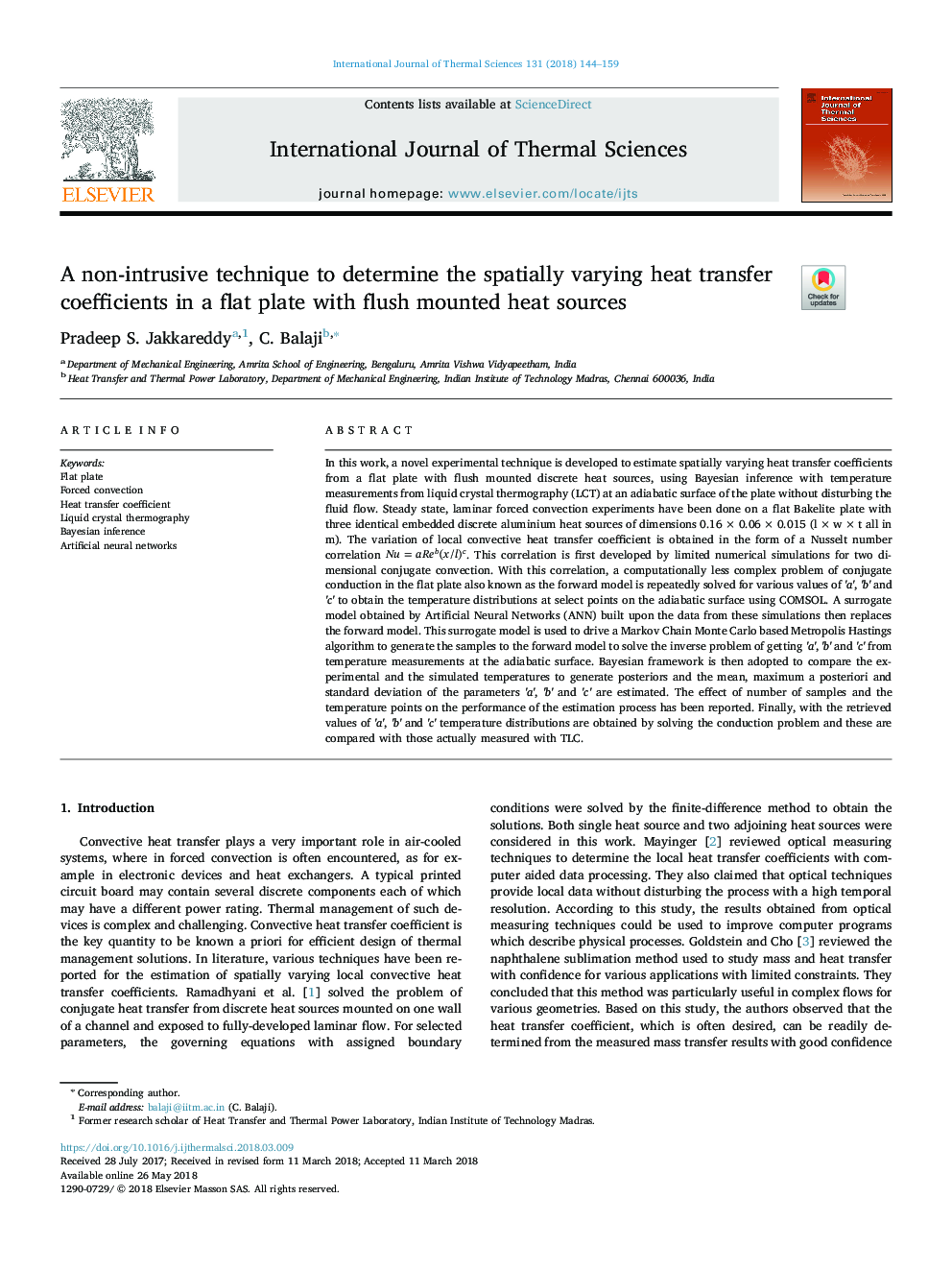| Article ID | Journal | Published Year | Pages | File Type |
|---|---|---|---|---|
| 7060601 | International Journal of Thermal Sciences | 2018 | 16 Pages |
Abstract
In this work, a novel experimental technique is developed to estimate spatially varying heat transfer coefficients from a flat plate with flush mounted discrete heat sources, using Bayesian inference with temperature measurements from liquid crystal thermography (LCT) at an adiabatic surface of the plate without disturbing the fluid flow. Steady state, laminar forced convection experiments have been done on a flat Bakelite plate with three identical embedded discrete aluminium heat sources of dimensions 0.16â¯Ãâ¯0.06â¯Ãâ¯0.015 (lâ¯Ãâ¯wâ¯Ãâ¯t all in m). The variation of local convective heat transfer coefficient is obtained in the form of a Nusselt number correlation Nu=aReb(x/l)c. This correlation is first developed by limited numerical simulations for two dimensional conjugate convection. With this correlation, a computationally less complex problem of conjugate conduction in the flat plate also known as the forward model is repeatedly solved for various values of 'a', 'b' and 'c' to obtain the temperature distributions at select points on the adiabatic surface using COMSOL. A surrogate model obtained by Artificial Neural Networks (ANN) built upon the data from these simulations then replaces the forward model. This surrogate model is used to drive a Markov Chain Monte Carlo based Metropolis Hastings algorithm to generate the samples to the forward model to solve the inverse problem of getting 'a', 'b' and 'c' from temperature measurements at the adiabatic surface. Bayesian framework is then adopted to compare the experimental and the simulated temperatures to generate posteriors and the mean, maximum a posteriori and standard deviation of the parameters 'a', 'b' and 'c' are estimated. The effect of number of samples and the temperature points on the performance of the estimation process has been reported. Finally, with the retrieved values of 'a', 'b' and 'c' temperature distributions are obtained by solving the conduction problem and these are compared with those actually measured with TLC.
Keywords
Related Topics
Physical Sciences and Engineering
Chemical Engineering
Fluid Flow and Transfer Processes
Authors
Pradeep S. Jakkareddy, C. Balaji,
